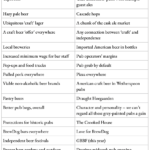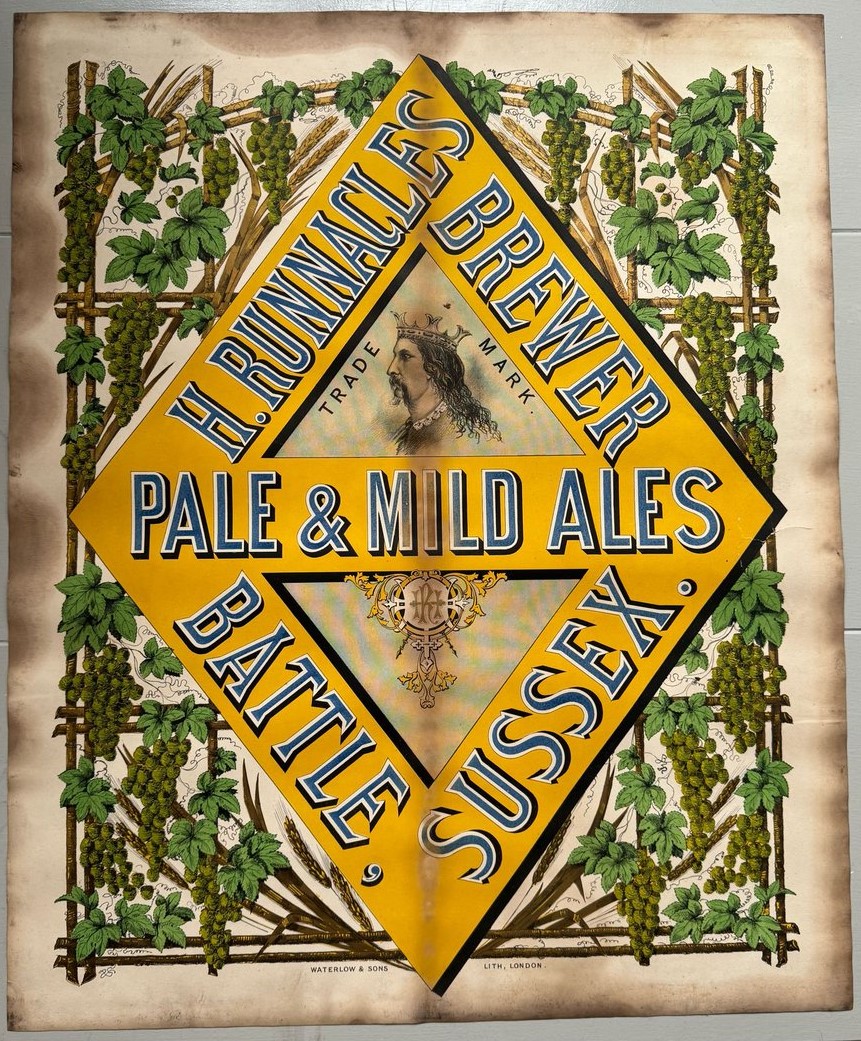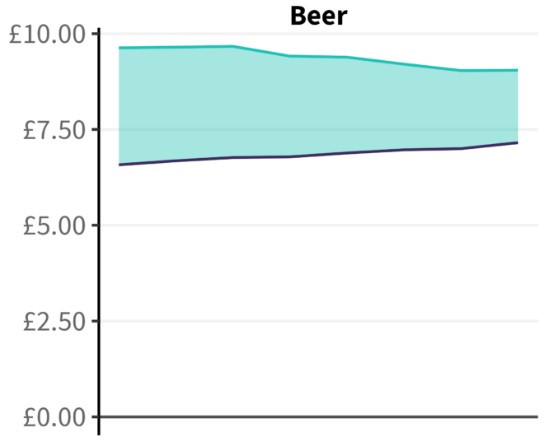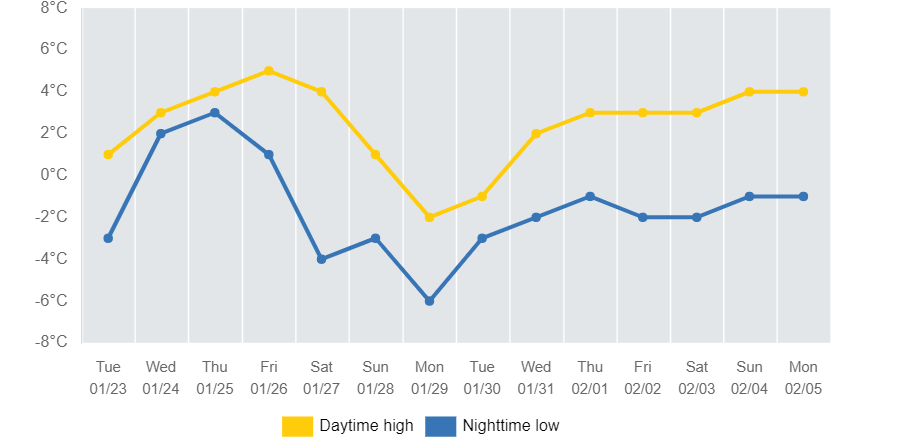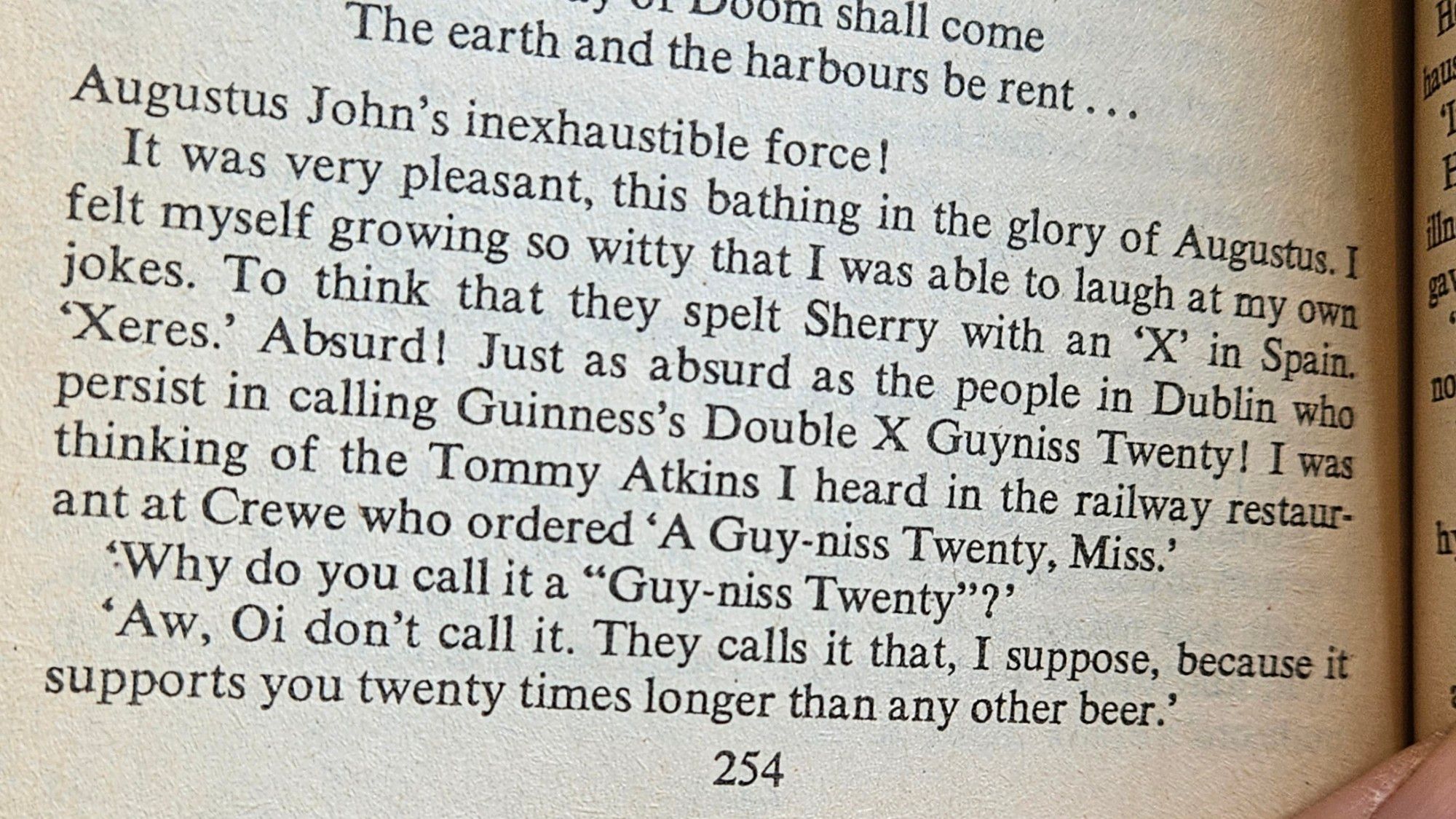 This is great. Up there is an image posted this week on Bluesky by Liam of IrishBeerHistory, a quote from the book As I Was Going Down Sackville Street by Oliver St. John Gogarty which is just excellent. I will refer to it as such from now on. Govern yourselves accordingly. You know what else is great? Now is great. March 1st to January 1st inclusive – totally great.* Napping with the windows open even if bundled up because it is only +5C. The same thing occurred to Katie apparently:
This is great. Up there is an image posted this week on Bluesky by Liam of IrishBeerHistory, a quote from the book As I Was Going Down Sackville Street by Oliver St. John Gogarty which is just excellent. I will refer to it as such from now on. Govern yourselves accordingly. You know what else is great? Now is great. March 1st to January 1st inclusive – totally great.* Napping with the windows open even if bundled up because it is only +5C. The same thing occurred to Katie apparently:
I managed to have a lovely half hour nap in my garden today without freezing solid. I’m doing the Scandi baby version of whatever that ice water guy does. Wrapped in blankies, having a lil sleepy outside.
These are the actual joys. So what’s out there for our beery naptime reading? First up, if you are looking for that rarest of things in these times – some good happy positive brewing news – look no further than David Jesudason’s almost alarmingly optimistic study in Pellicle of an almost alarmingly optimitic brewer, Andy Parker, the founder of Elusive Brewing in Wokingham, Berkshire:
The word ‘nice’ has often been banned by editors I’ve worked with. The attributive adjective is seen as a nothing word, used to describe anything from Rich Tea biscuits, to mild weather, or a stranger’s demeanour. It’s an archetypal British word, and one Andy is forever linked to. Worst of all, it’s a term that does him and his incredible brewery a disservice. Firstly, yes he is the nicest guy in beer, but there’s nothing superficial about why he’s ‘nice.’ Many people I speak to describe him as one of the most thoughtful, kind and—above all—considerate humans they’ve come across. I found him to be a great listener in the numerous times we’ve met.
In their Patreon footnotes to last Satuday’s post, B+B indicated** that they were having an issue finding note worthy writings, a problem I can empathize with – but that bears no connention to my mentioning this post by The Beer Nut who highlights some very proper quality control measures being taken in the face of an issue popping up:
The prologue to today’s beers is that they were both recalled from the market. A problem with the can seamer meant that not all of them were properly sealed, running the risk of oxidation. Craft Central were kind enough to refund me the cost of the beers and I checked with the brewery, Lineman, if it was OK to review them, since I couldn’t detect any flaws. Mark showed me how to spot the defective cans and I’m confident that neither of these were affected by the issue.
Bonus quality control about quality control right there, that’s what that is. Conversely, thinking about things getting out of control, some interesting news out of Britian as cuts to taxes imposed on beer have not had any particular positive effect on trade:
The relief reduced the tax on them by 9.2%. Mr Hunt said: “we’re protecting the price of a pint”. But beer prices have continued rising. The Office for National Statistics (ONS) said they were up 7.5% in January 2024 compared with the same month last year, with prices increasing every month of the year, despite draught relief… figures show that almost exactly the same number of pubs closed in the UK in the second half of 2023 (266) as had closed in the first half (265).
The Cookie and the Mudge shared thoughts on this matter:
C: Does anyone really believe that if all the beer, pub, and Camra groups got everything they wanted in the budget, then pubs would enter a golden era of prosperity and success? They’d continue to die on their arse but just pay less tax in the process.
M: Yes, the long-term decline of pubs is primarily caused by social change, not by price.
I have to agree with that. It’s all bad news on both sides of the cash box and in other areas of life. What’s a good sign that beer in the UK is priced at a pretty penny? Crime:
A haul of suspected illegal beer equivalent to 132,000 pints has been seized at a ferry terminal in south Scotland. Police worked with the Serious Organised Crime Taskforce and HMRC as part of the clampdown at Cairnryan Port, near Stranraer. … An HMRC spokesman added: “Disrupting criminal trade is at the heart of HMRC’s strategy to clamp down on the illicit alcohol market which costs the UK around £1bn per year.”
Speaking of taxation of the pleasures of the nation, something of a milestone was passed here in Canada which bodes ill in another way.
Canada’s federal government collected more excise tax revenue from cannabis than it did from beer and wine last year. That comes as a parliamentary committee is recommending the government ease up on the cannabis tax. In the 2022-23 fiscal year ended March 31, the federal government received 610.1 million Canadian dollars ($450 million) from excise duties applied to beer. Beer and wine excise revenue combined was CA$887.7 million. Federal excise duties from cannabis that year, meanwhile, amounted to approximately CA$894.6 million, of which CA$667.6 million was transferred to provincial and territorial coffers.
See here, folk aren’t turning to crime so much as the now decriminalized. Yet… the national spliffy trade still complaining about facing headwinds… get it? But that is not really what has gone on:
Beer sales fell by 96 hectoliters per 100,000 people immediately after adult-use legalization, and by a further 4 hectoliters per 100,000 people in each following month, equalling an average monthly reduction of 136 hectoliters per 100,000 person.
So why they complaining when they are facing being the beneficiries of inevitable cultural change? Same as it ever was. And just to pile on the reasons for the miserable forecasts for beer’s future, Jeff explores another bummer of a story – did Covid make hangovers worse?
A recent paper suggests that hangovers are worse for people with longs Covid… The study only looked at four people and it’s just a review of their cases. Statistically, not much there… [but] – what portion of the dip in alcohol consumption and the rise in N/A may be due to people just feeling super crappy when they drink? We’ve had four years of young people coming into their drinking years. If their experiences were mostly negative—especially because drinking’s social component was dulled or absent—might they just have abandoned alcohol before developing the usual youthful infatuation with it?
Youth! What the hell do they know? Speedy if tenuous advice to youth segue! I came across a social media reference to The Instructions of Shuruppag, a Sumerian document from around 4500 years ago reciting older sayings predating the Flood. What I first noticed was one of those decontextualized “hey cool!” quotes people share just because it mentions beer a couple of times. But if you look at the text itself, you realize that the sayings are warnings of the wise aimed at a youth – as well as a window to a very alien, even very tenuous culture:
You should not boast in beer halls like a deceitful man… You should not pass judgment when you drink beer… You should not buy a free man: he will always lean against the wall. You should not buy a palace slave girl: she will always be the bottom of the barrel… Fate is a wet bank; it can make one slip… To have authority, to have possessions and to be steadfast are princely divine powers. You should submit to the respected; you should be humble before the powerful… You should not choose a wife during a festival… A drunkard will drown the harvest.
Grim life that, living in the shadow of the clay walls and those slippy dirt embankments that save you from the mountain people. Even with the beer. Somewhat related to the bottom of the barrel, VinePair has illustrated the lack of facinating beer writing by publishing the story you’ve perhaps not been waiting for:
Yes, it’s fine to drink the stuff hanging out on the bottom of the bottle. “It doesn’t give you the sh*ts. That’s preposterous,” Grimm says of brewing byproduct. “That’s where a bunch of the good B complex vitamins live.” And it’s true: Most brewer’s yeast is rich in vitamins. This doesn’t apply to hop particulates like one would find floating around in an unfiltered IPA like Heady Topper — we’re talking about the yeast, which tends to pile up at the bottom of saisons, mixed culture beer, and spontaneously fermented brews.
And here I thought the 2016ish “off-flavour seminar” fad was the dullest form of beer fan education that could be fashioned by humankind.*** Sludgy gak studies. Speaking of echoes of craft’s peaks past, at the end of last week and at the website of a homebrewing supply service, Matt discussed an interesting phenomenon of the lingering trade in sour and wild beers that once were craft fans’ darling but are now brewed perhaps as a bit of nod to nostagia:
The existence of each of these breweries is a statement. A financial analyst would probably describe them as being commercially unviable. But a romantic? They would call them bold, boisterous, and even necessary. Beer would be a hopelessly boring place if we just had a handful of similar beers to choose from, after all. Considering their existence, it still leaves me with the question: who’s buying these beers? Or perhaps more pertinently, who’s going to be buying them in the future?
The future. It’s all about the future this week, it seems. It’s like no one took the advice of old Shuruppag. Makes me wonder if craft beer is like cable TV facing the onset of the information super highway… what did we call it 25 years ago? Convergence! We are now converged. How big is your cable TV bill or your landline for that matter? So many other things to do, so many means to an early death to avoid, so many other things to spend money on, so many other states of mind to achieve – including good old sobriety. Note:
Athletic Brewing is now the number one beer of any kind at Whole Foods. More than all of beer brands with alcoholic contents.
Not good. Or maybe real good. And things appear to be getting worse in China (if you can wade through the AI generated shit text) and Will Hawkes alerted me to the plug being pulled on Meantime in London:
BREAKING: Asahi is closing the Meantime Brewery and moving all production to Fuller’s… Staff were only told today. Asahi says ‘intention is for Meantime to retain a footprint in Greenwich … Plans are underway for the creation of a new standalone consumer retail experience, including a continuation of brewing’
Meantime was a pretty Wowie Kazowie! brewery in its day. My first encounter was on an August 2007 shopping spree in glorious Rochester NY, with reviews of their Coffee Porter and the IPA the next couple of years. They got in to the LCBO here in Ontario in late 2009 or 2010 and were a regular for a while, perhaps last seen in 2019. There you go. The past is a foreign land. Ron confirmed that truth to perhaps the contrary when he shared this week news of a revolution in 1970s pub gub in the UK:
There are three recipe booklets, one gives 50 meals using Batchelors savoury mince or farmhouse stew, the next giving 50 recipes for sweets from Batchelors and the third with 50 recipes for entrées from Batchelors ready dishes. All the products, from soup to coffee, and including quick-dried vegetables, are convenience foods. They offer no shelf-life problems, all being guaranteed for at least 12 months under normal conditions. Reconstitution is by the addition of water, bringing to the boiling point and simmering for varying periods up to about 30 minutes… They may be made to suit the custom and, in particular, the evening out — when it is a natural thing to go to a pub for a few drinks and a meal not encountered in everyday household catering.
Holy Hanna! Sounds disgusting. You know why food like this is only sold to insane backwoods hikers and astronauts, don’t you!?!
That’s it! I can’t take it no more. Done. There we are… and again … we roll the credits… well, the credits, the stats the recommends and the footnotes. There is a lot going on down here and, remember, ye who read this far down, look to see if I have edited these closing credits and endnotes (as I always do), you can check out the many ways to find good reading about beer and similar stuff via any number of social media and other forms of comms connections. This week’s update on my emotional rankings? Facebook still in first (given especially as it is focused on my 300 closest friends and family) then we have BlueSky (124) rising up to maybe… probably… likely pass Mastodon (914) in value… then the seemingly doomed trashy Twex (up again to 4,463) hovering somewhere above or around my largely ignored Instagram (165), with sorta unexpectly crap Threads (43) and not at all unexpectedly bad Substack Notes (1) really dragging up the rear – and that deservedly dormant Patreon presence of mine just sitting there. I now have admitted my dispair for Mastodon in terms of beer chat, relocated the links and finally accept that BlueSky is the leader in “the race to replace” Twex even while way behind.
Fear not! While some apps perform better than other we can always check the blogs, newsletters and even podcasts to stay on top of things including the proud and public and certainly more weekly recommendations in the New Year from Boak and Bailey every Saturday and Stan promises to be back next Monday. Look at me – I forgot to link to Lew’s podcast. Fixed. Get your emailed issue of Episodes of my Pub Life by this year’s model citizen David Jesudason on the odd Fridays. And Phil Mellows is at the BritishBeerBreaks. Once a month, Will Hawkes issues his London Beer City newsletter and do sign up for Katie’s now revitalised and wonderful newsletter, The Gulp, too. Ben’s Beer and Badword is back with all the sweary Mary he can think of! And check out the Atlantic Canada Beer Blog‘s weekly roundup. There is new reading at The Glass which is going back to being a blog in this weeks best medium as message news. Any more? Yes! Check to see the highly recommended Beer Ladies Podcast. That’s quite good. And the long standing Beervana podcast . Plus We Are Beer People. There is the Boys Are From Märzen podcast too and Ontario’s own A Quick Beer. There is more from DaftAboutCraft‘s podcast, too. All About Beer has introduced a few podcasts… but some may be losing steam. And there’s also The Perfect Pour. Plus follow the venerable Full Pint podcast. And the Craft Beer Channel on Youtube and remember BeerEdge, too, and The Moon Under Water… if you have $10 a month for this sort of thing… I don’t. Pete Brown’s costs a fifth of that. There was also the Beer O’clock Show but that was gone after a ten year run but returned renewed and here is the link! Errr… nope, it is gone again according to Matty C.
*Minus of course half of November. That’s it. Otherwise, best part of the year. The other ten weeks suck. The Leap Year thing made it worse, too. But the rest is great. Except… when the clocks change. That’s another bit of totally sucks coming up this weekend. Going to be totally baked next week, sun coming up at like 11:53 pm the night before. That really sucks. What’s the best beer for clock change Sunday? Coffee?
**“…we didn’t bookmark anything during the week, which is unusual. Then, when we checked our usual sources, we didn’t find tons of fresh writing that grabbed us. So, we dug deeper, and found some websites and blogs that were completely new to us… Heroes!
***Up there with branding consultants proclaiming the brand of their local business development clients is the best! The university’s press release is hilarious: commission a study to affirm a claim then reframe it as the awarding of a title.




